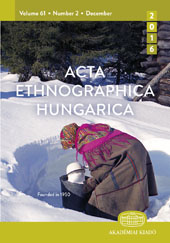BETWEEN GROITZSCH AND DEUTZEN: THE RISE AND TRANSFORMATION OF AN AREA OF “COOPERATION” IN EAST GERMANY, 1945–2004
BETWEEN GROITZSCH AND DEUTZEN: THE RISE AND TRANSFORMATION OF AN AREA OF “COOPERATION” IN EAST GERMANY, 1945–2004
Author(s): John R. EidsonSubject(s): Agriculture, Recent History (1900 till today), Economic policy, WW II and following years (1940 - 1949), Post-War period (1950 - 1989), Transformation Period (1990 - 2010), Socio-Economic Research
Published by: Akadémiai Kiadó
Keywords: German Democratic Republic (GDR);collectivization;cooperative farm (LPG);“cooperation” in agriculture;German reunification;Landwirtschaftsanpassungsgesetz;East German agriculture;new federal states;
Summary/Abstract: Developments in East German agriculture after 1945 and 1990 are illustrated through a case study set in the region south of Leipzig. Beginning in the 1950s, the collectivization of agricultural production had led, by the mid-1970s, to the consolidation of fully collectivized cooperative farms (LPG type III), either at the village level or in areas encompassing neighboring villages. Thereafter, planners promoted industrialization, specialization, and cooperation among neighboring LPG type III. The result was areas of “cooperation” with LPG for plant production at their centers and one to three LPG for animal production attached to them. In 1990, such areas of “cooperation” served as points of departure for privatization under the new law. In the case study, the transformation of an area of “cooperation” resulted in a new cooperative farm, a few family farms, a meat processing plant, and even a bison ranch. Explanations for these developments are provided.
Journal: Acta Ethnographica Hungarica
- Issue Year: 58/2013
- Issue No: 1
- Page Range: 123-147
- Page Count: 25
- Language: English
- Content File-PDF

